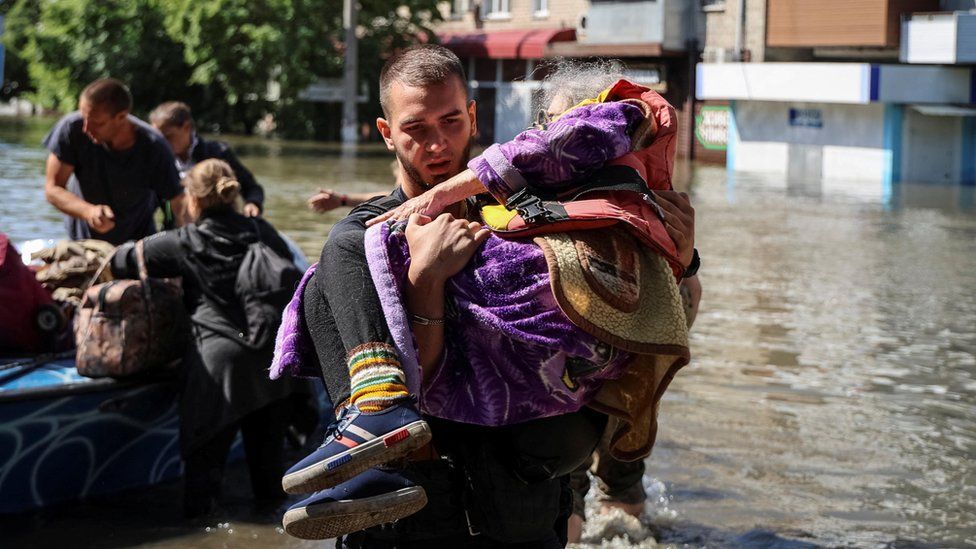The extent of the damage brought on by the Tuesday flood of water that was released after a sizable dam in the Russian-controlled region of southern Ukraine collapsed is beginning to become apparent.
Despite the possibility that flood waters have not yet reached their peak in the city of Kherson, located about 75 kilometers (45 miles) to the west, satellite images demonstrate how much water has already spread downstream from the Kakhovka dam.
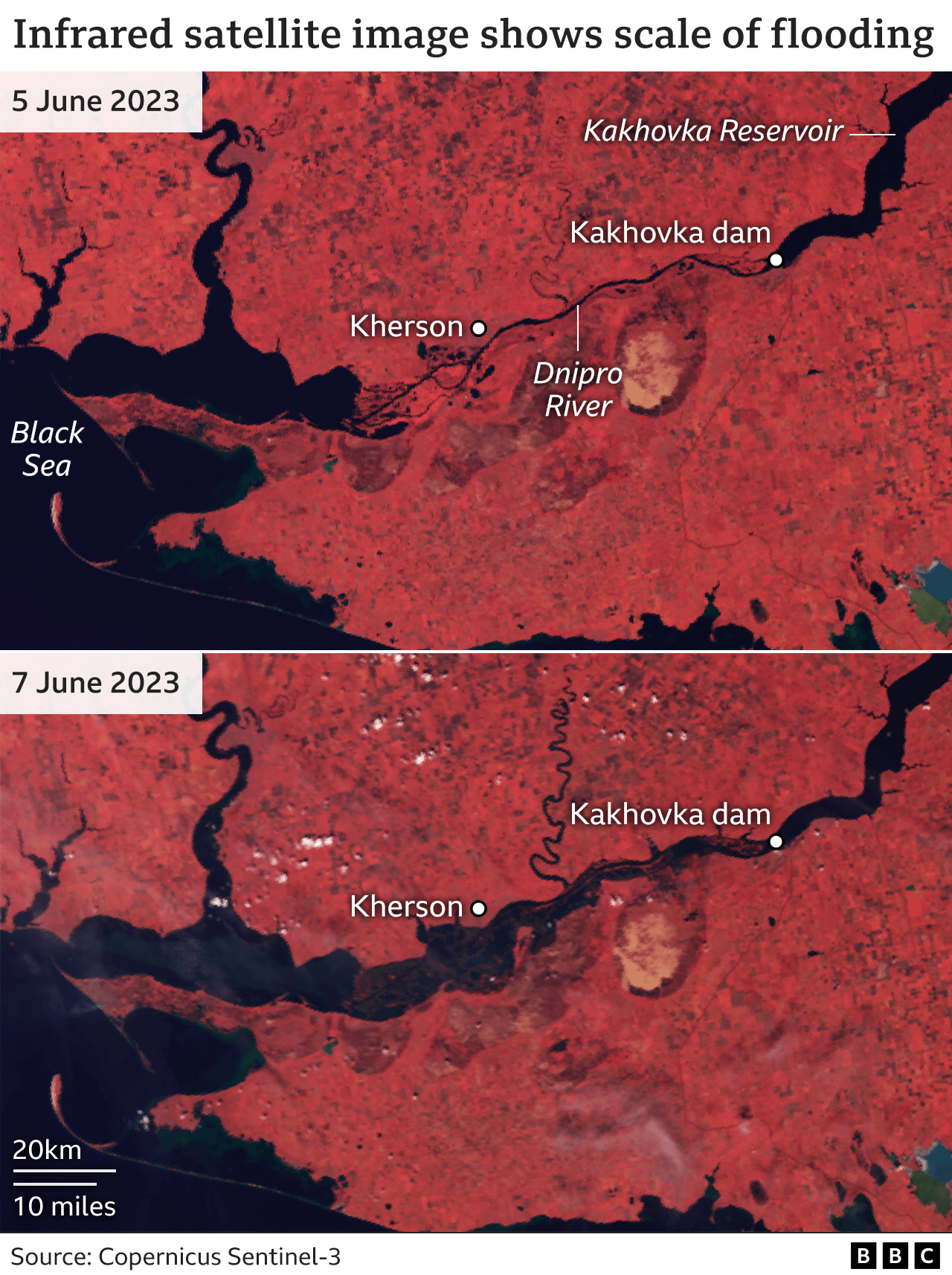
The Kakhovka Sea is the name given to the enormous reservoir that the dam in the Kherson region of Ukraine holds back next to the city of Nova Kakhovka because there are some places where it is impossible to see the opposite bank.
Hours after the dam was destroyed, buildings in Nova Kakhovka appeared to be engulfed in floodwaters in images taken on Tuesday.
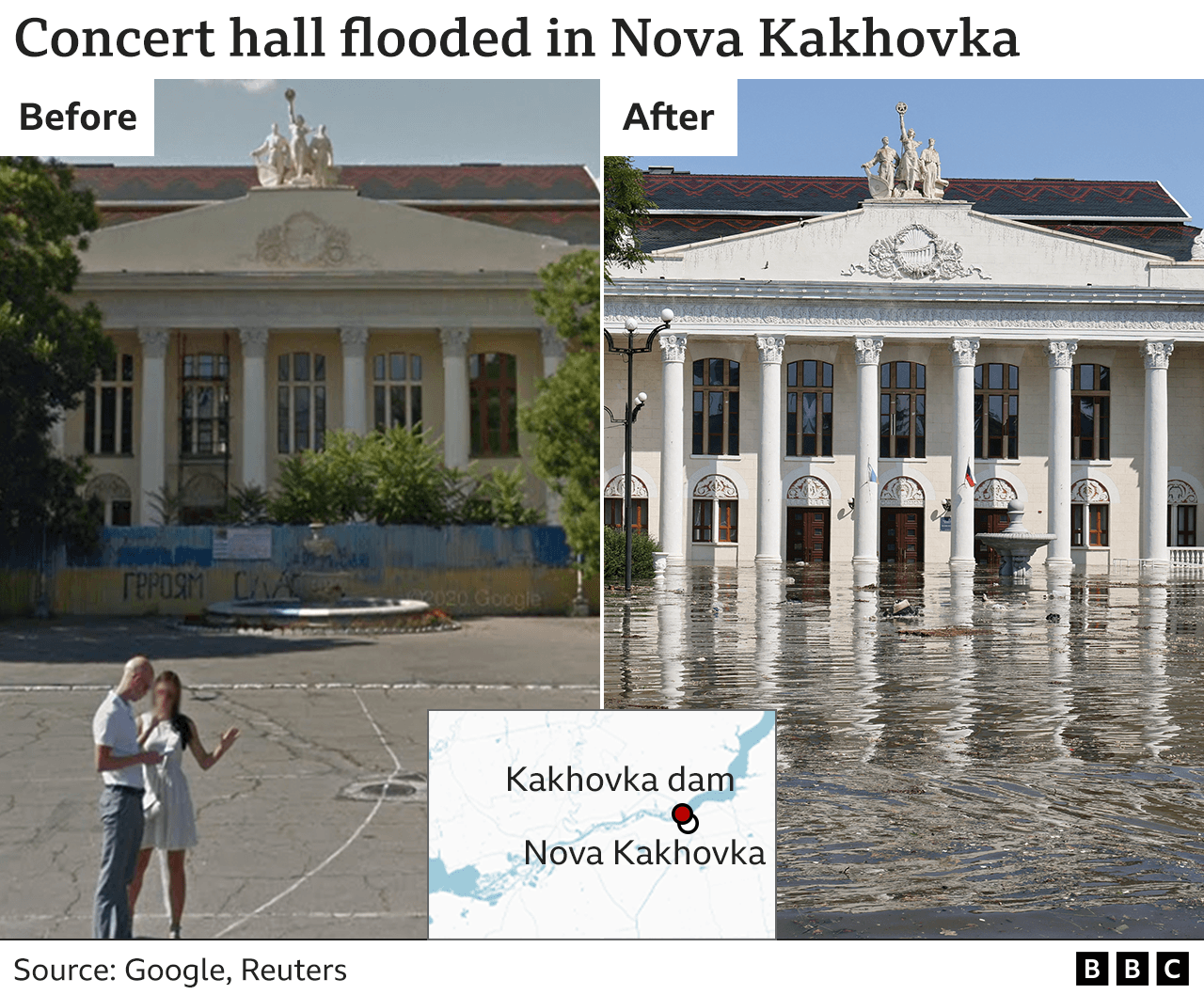
Although the exact timing and mechanism of the dam's damage are unknown, satellite images appear to show that the dam's condition had gotten worse over a period of days.
Although a road that crosses the dam can be seen to have sustained significant damage as of 2 June, the water flow did not appear to change until 6 June, when a breach in the wall and the collapse of nearby buildings can be clearly seen.
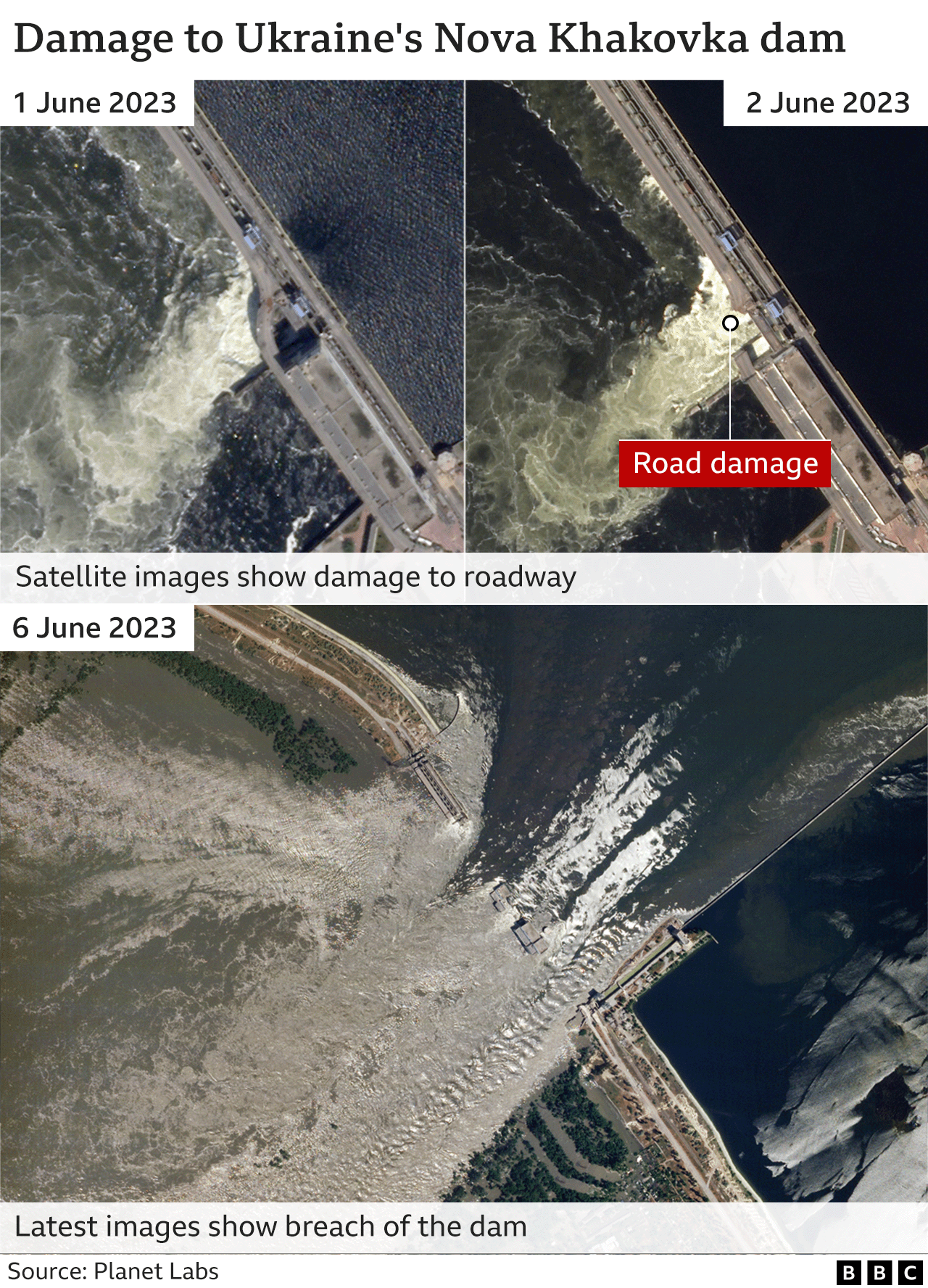
Since the invasion last year, Russian forces have occupied the entire south bank of the Dnipro River up to the easternmost point of the enormous Kakhovka reservoir.
In addition to the flooding, the collapse of the dam has sparked concern for the Zaporizhzia nuclear power plant, 130 km upstream.
The reservoir supplied cooling water to the plant, which is also under Russian control, but it is currently rapidly running out of water.

When the International Atomic Energy Agency (IAEA) stated that there were additional water sources, including a sizable cooling pond nearby, to keep the nuclear plant cool, the worries were somewhat allayed.
According to some reports, as the massive reservoir behind the dam empties, water levels may be falling in the town of Nova Kakhovka, which is closest to the dam.
However, the village of Korsunka, which is about 15 km west of the dam, is completely under water, according to the city's newly-installed Russian mayor Vladimir Leontyev, and three other villages have flooding up to the level of their roofs.
Both Ukraine and Russia claim to have evacuated more than 1,000 individuals each.
More than 40,000 people, including 17,000 in Ukraine-controlled territory west of the Dnipro River and 25,000 in Russian-occupied territory east, must leave, according to Ukrainian officials.

However, despite warnings from Ukrainian authorities that the water levels may not peak until the end of Wednesday, Kherson has already experienced significant flooding.
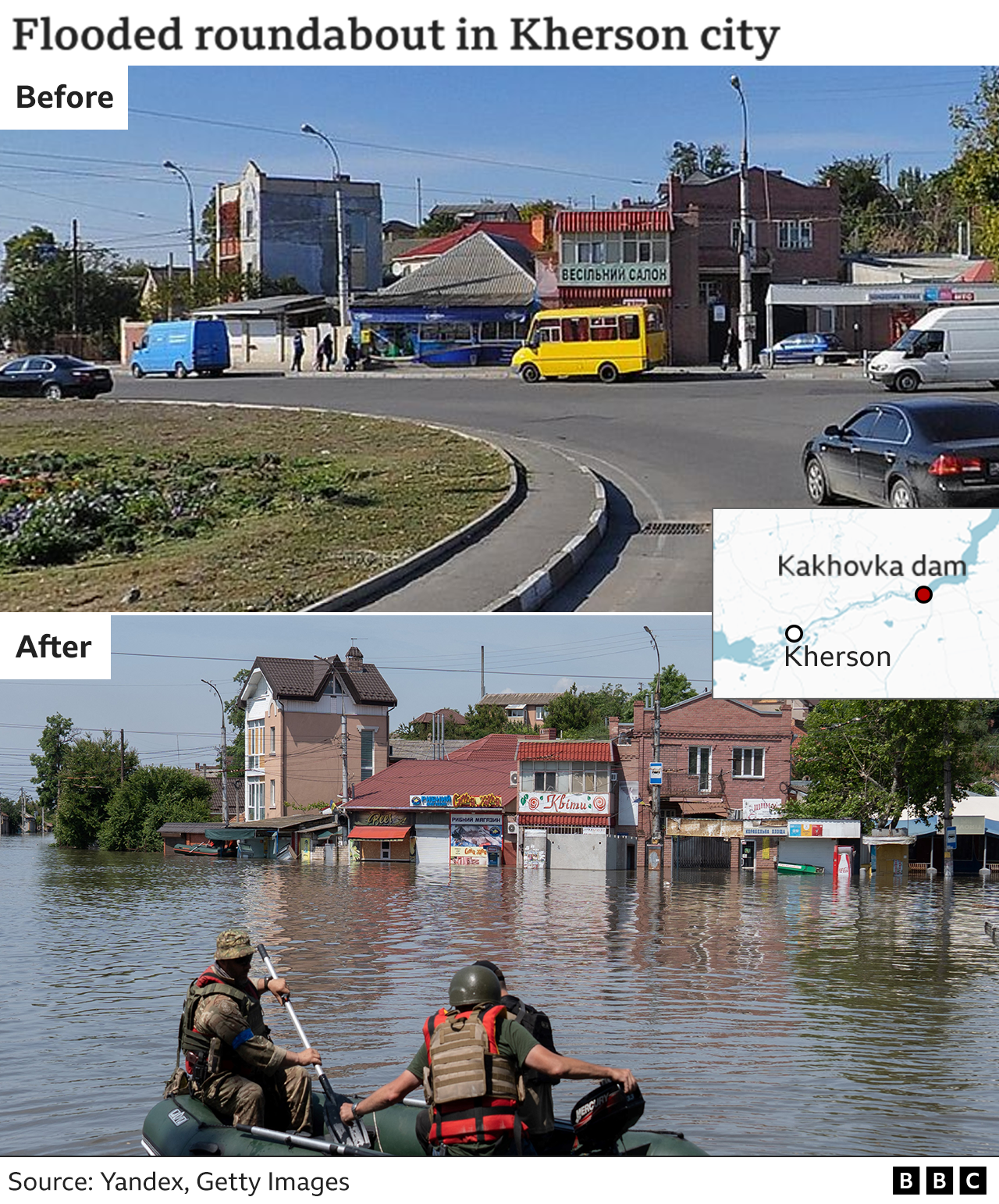
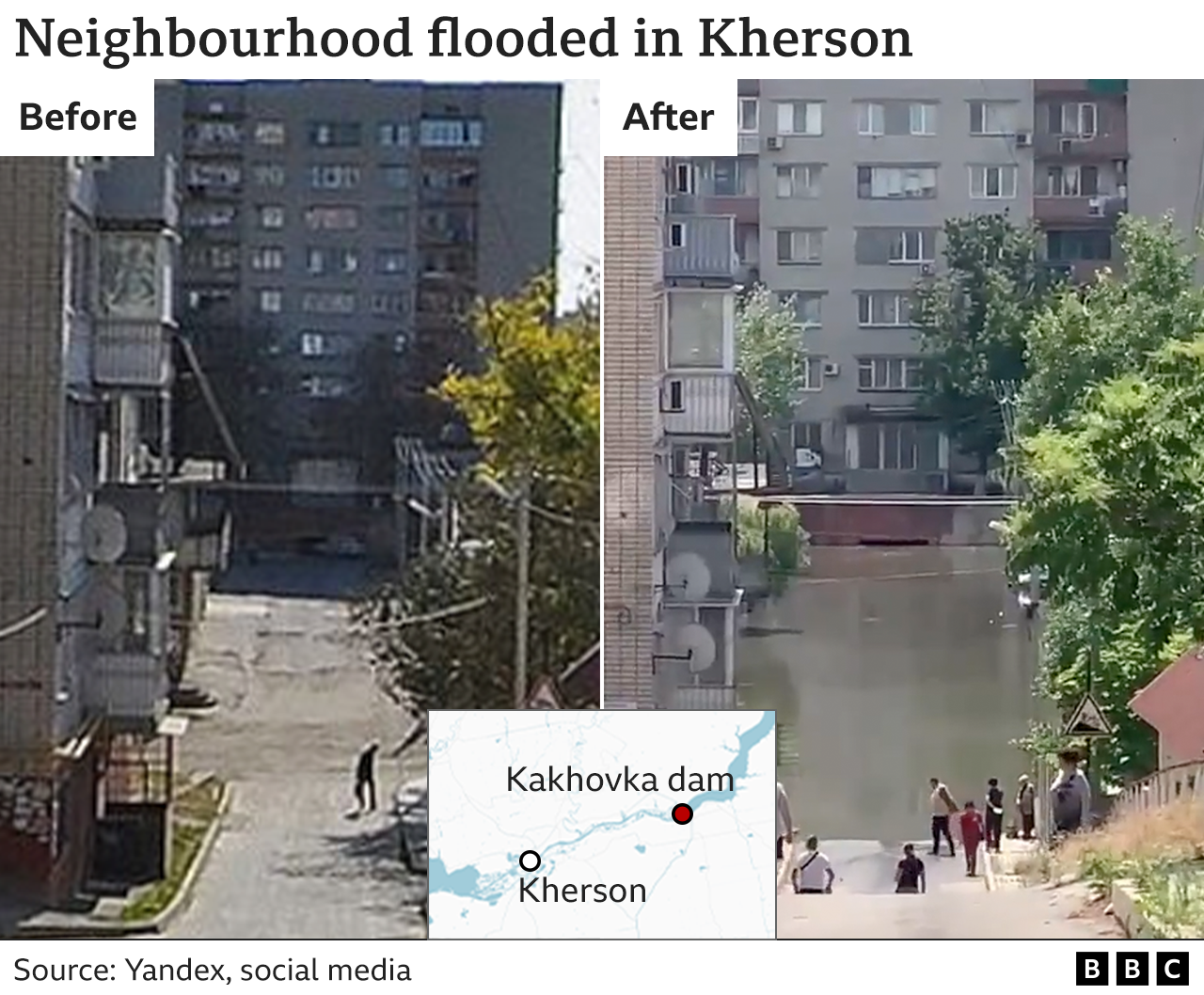
Satellite images that illustrate how much of the city has been affected by the downpour help to clarify the true scale once more.
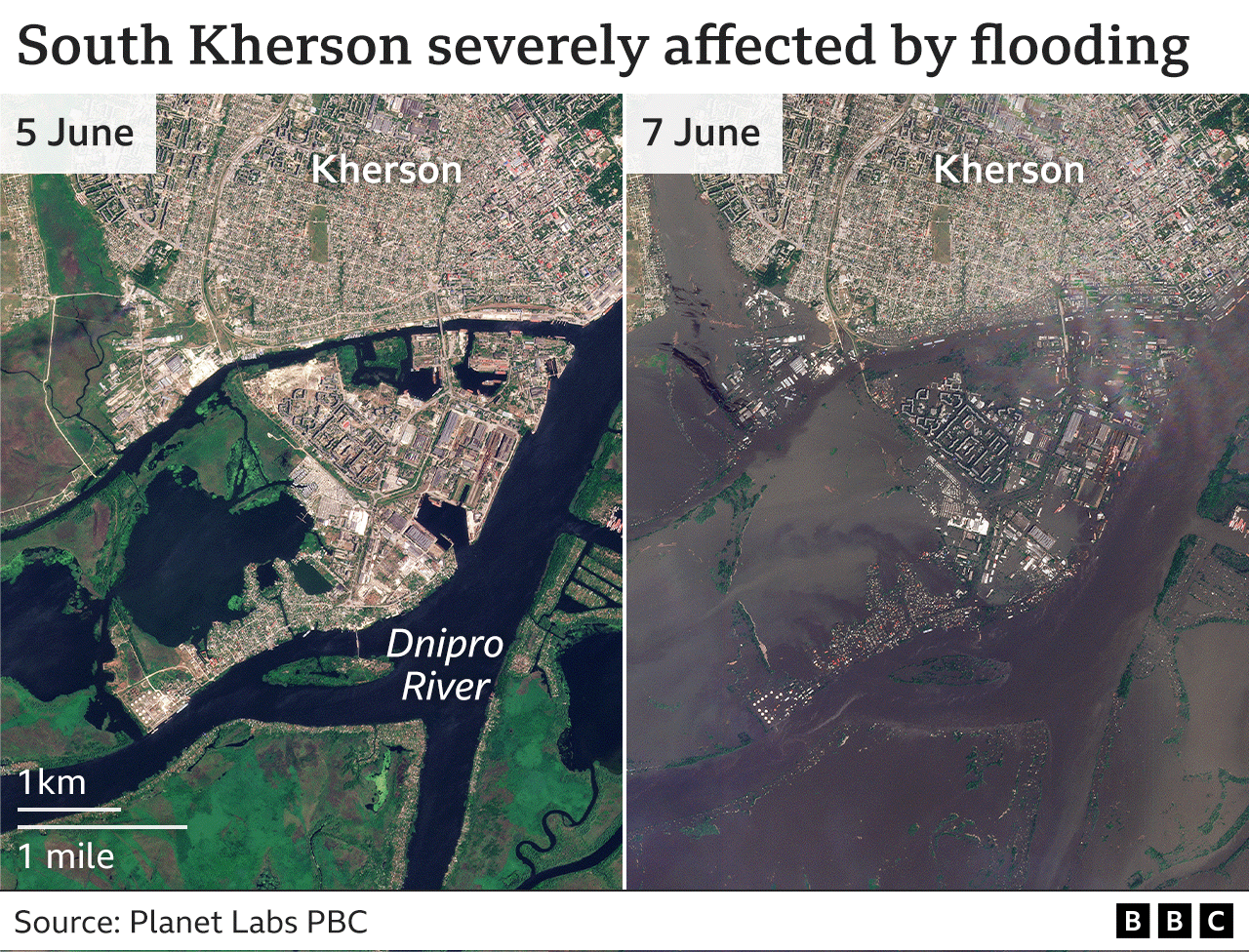
It is merely the most recent tragedy to affect the city since Russia's invasion - occupation, liberation following fierce fighting and daily shelling.
Additionally, James Waterhouse of the BBC, who is in the city, claims that the morale is lower and that the atmosphere has changed. He concludes that enough is enough.
Erwan Rivault, Kate Gaynor, Gerry Fletcher, Filipa Silveri, Tural Ahmedzade, Daniele Palumbo, and Chris Clayton contributed reporting and graphics, respectively. o.

